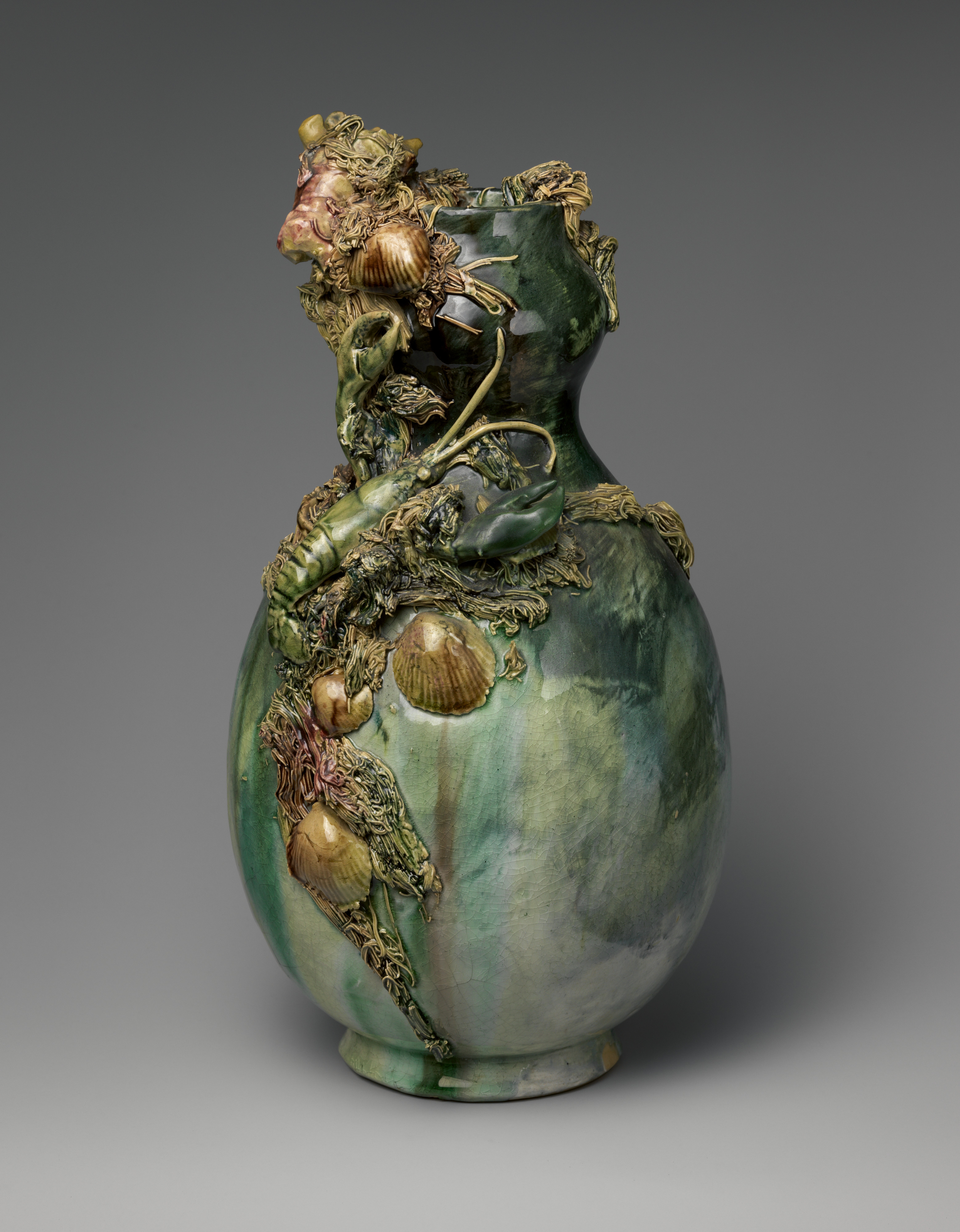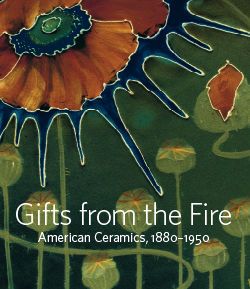Vase with marine life
Thomas J. Wheatley American
Many of the Cincinnati potters and decorators of the late 1870s and early 1880s were skilled practitioners of the French technique of barbotine, or painting with colored slips under the glaze. Another aspect of barbotine decoration was introducing applied elements of flowers, or in this exceptional example, marine life. Thomas J. Wheatley demonstrated an affinity for Japanese art that aligned with French ceramics in the 1880s. Known primarily for his barbotine, this vase and a small numbers in this mode, reflect the influence of Asia in their motifs and inspiration, as well as demonstrating his reverence for the French sixteenth-century pottery of Bernard Palissy. Palissy, a prominent figure in all histories of ceramics, is often considered the father of modern ceramic art. Wheatley’s distinctive vase drew upon the Renaissance master’s work in portraying sea life realistically and in high relief. It literally pulsates with life as the fish, crustacean, and seaweed surge around the gourd-shaped vase, and boldly extend beyond the vase’s lip.
Due to rights restrictions, this image cannot be enlarged, viewed at full screen, or downloaded.
This artwork is meant to be viewed from right to left. Scroll left to view more.




